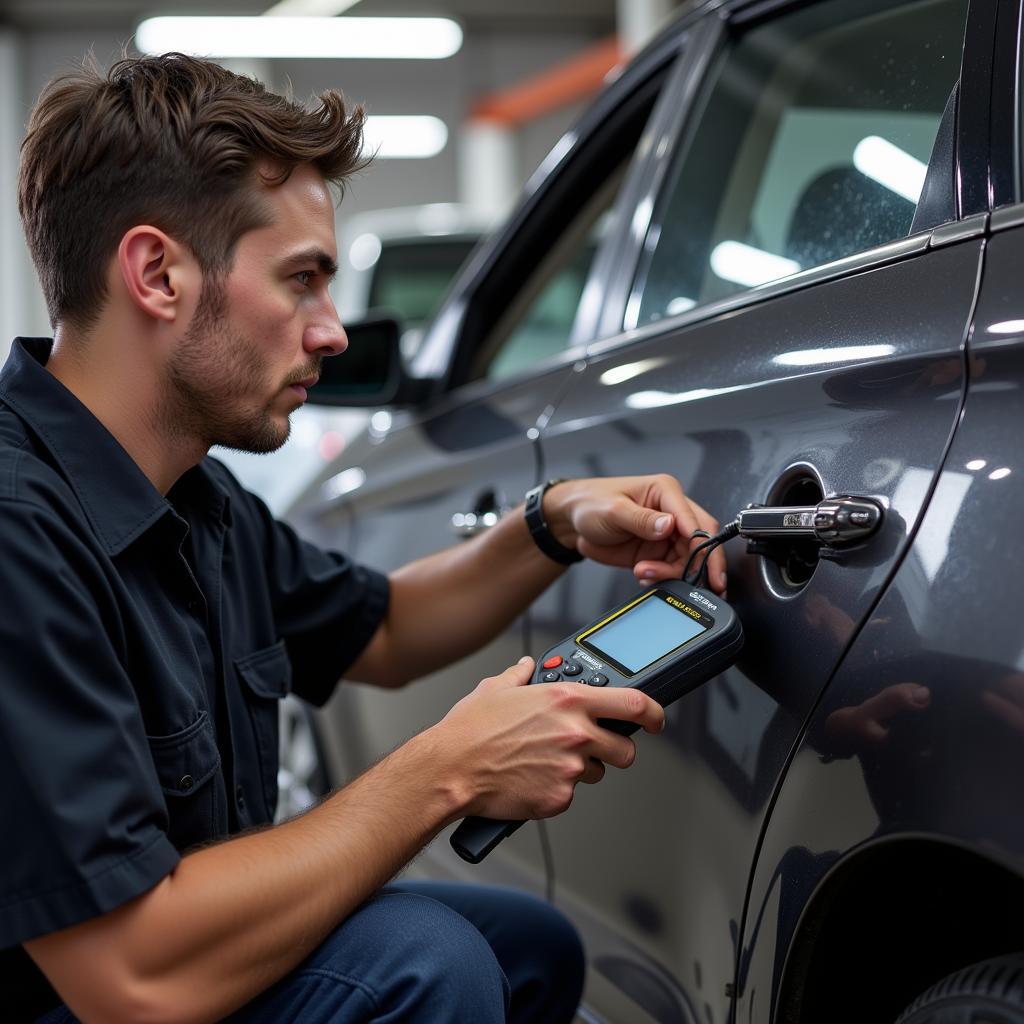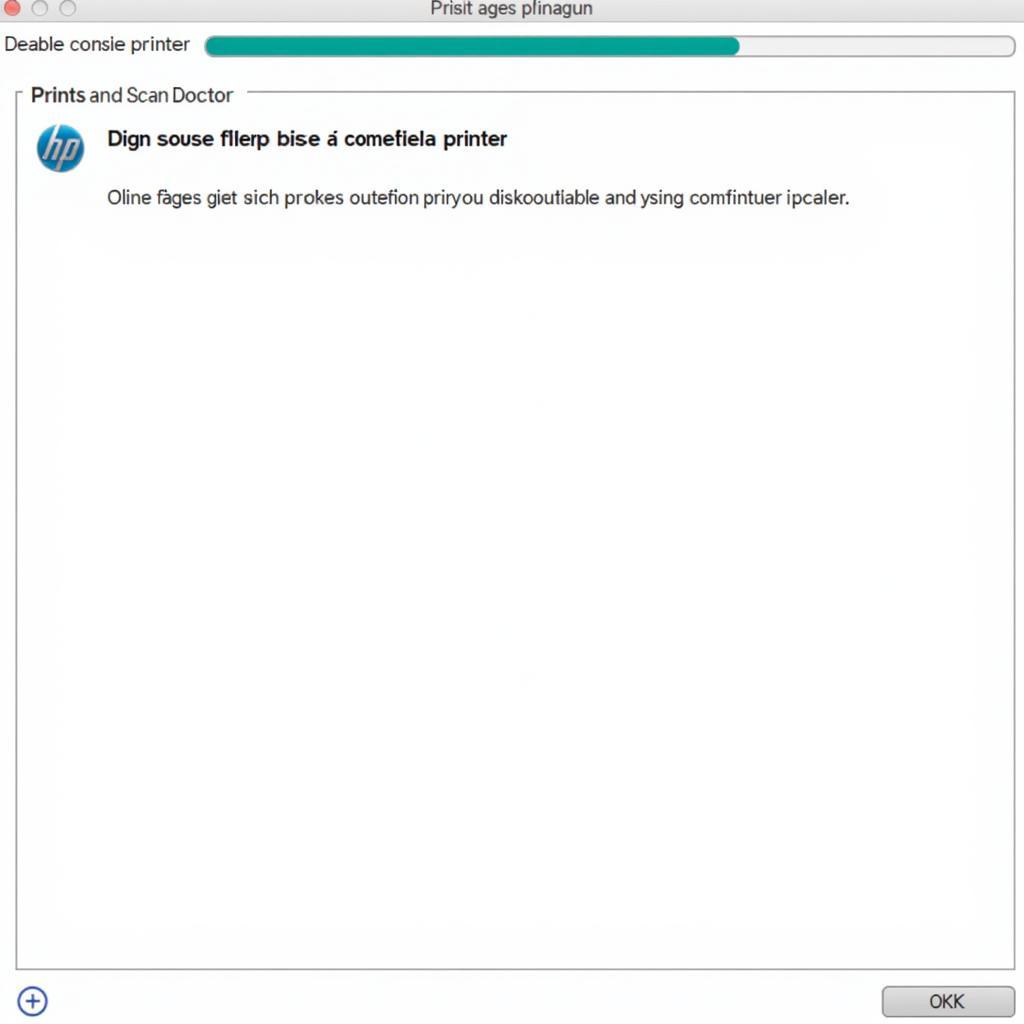If you own a 2015 Hyundai Sonata, you know how important it is to keep up with maintenance and troubleshoot any issues that arise. A reliable auto scan tool can be an invaluable asset, providing the ability to diagnose problems, read and clear error codes, and monitor your vehicle’s performance. But with so many options available, finding the best auto scan tool for your 2015 Hyundai Sonata can be a daunting task. This comprehensive guide will walk you through everything you need to know, from understanding your needs to choosing the right features and making an informed decision.
Why Invest in an Auto Scan Tool for your 2015 Hyundai Sonata?
Modern vehicles like the 2015 Hyundai Sonata are equipped with complex electronic systems that control everything from engine performance to safety features. When an issue occurs, the vehicle’s onboard computer generates Diagnostic Trouble Codes (DTCs) that provide clues about the underlying problem. An auto scan tool acts as a window into these systems, allowing you to:
- Diagnose Engine Problems: Identify issues related to engine performance, emissions, fuel system, and more.
- Read and Clear DTCs: Access and interpret the error codes stored in your Sonata’s computer, and clear them once the problem is resolved.
- Monitor Real-time Data: View live sensor data such as engine RPM, coolant temperature, oxygen sensor readings, and more, providing valuable insights into your vehicle’s health.
- Customize Settings: Some advanced scan tools allow you to personalize certain vehicle settings, such as door lock behavior or lighting preferences.
Understanding the Different Types of Auto Scan Tools
Before diving into specific features, it’s essential to understand the different types of auto scan tools available:
- Code Readers: These basic tools can read and clear DTCs, offering a starting point for diagnosing issues.
- OBD-II Scanners: More advanced than code readers, these tools provide access to live data streams and manufacturer-specific codes.
- Professional-Grade Scanners: Used by mechanics and experienced DIYers, these comprehensive tools offer advanced features like bi-directional control, coding, and programming capabilities.
For most 2015 Hyundai Sonata owners, an OBD-II scanner strikes a good balance between functionality and affordability.
Key Features to Consider for Your 2015 Hyundai Sonata
Not all auto scan tools are created equal. When choosing the best one for your Sonata, consider these essential features:
- Vehicle Compatibility: Ensure the scanner explicitly states compatibility with the 2015 Hyundai Sonata to avoid any surprises.
- Code Library: A comprehensive code library with detailed descriptions and possible solutions is crucial for effective troubleshooting.
- Live Data Streaming: The ability to view real-time sensor data is invaluable for diagnosing intermittent problems and monitoring performance.
- Graphing and Recording: Some scanners allow you to graph live data and record readings for later analysis.
- User Interface and Display: A clear and intuitive interface with a readable display makes using the scanner more convenient.
Recommended Auto Scan Tools for 2015 Hyundai Sonata
Based on the criteria above, here are some highly-regarded auto scan tools that are compatible with the 2015 Hyundai Sonata:
- [Insert Brand & Model 1]: This scanner offers a balance of features and affordability, providing access to DTCs, live data, and graphing capabilities.
- [Insert Brand & Model 2]: With its advanced code library and user-friendly interface, this scanner is a great option for DIYers looking for comprehensive diagnostics.
- [Insert Brand & Model 3]: For professional-level functionality, this scanner provides bi-directional control, coding capabilities, and advanced troubleshooting features.
 Mechanic Using Auto Scan Tool on a Hyundai Sonata
Mechanic Using Auto Scan Tool on a Hyundai Sonata
“Investing in a quality auto scan tool is like having a personal mechanic at your fingertips. It empowers you to understand your vehicle better and avoid unnecessary trips to the repair shop,” says [Expert Name], a certified automotive technician with over 15 years of experience.
Conclusion
Finding the best auto scan tool for your 2015 Hyundai Sonata doesn’t have to be overwhelming. By understanding your needs, considering the key features, and exploring the recommended options, you can make an informed decision that empowers you to take control of your vehicle’s maintenance and diagnostics.
If you need assistance choosing the right auto scan tool or have any questions about automotive diagnostics, feel free to contact the experts at ScanToolUS. Our team of experienced technicians is always happy to help you find the best solutions for your automotive needs.
You can reach us at +1 (641) 206-8880 or visit our office at 1615 S Laramie Ave, Cicero, IL 60804, USA.
Frequently Asked Questions
Q: Can I use any OBD-II scanner on my 2015 Hyundai Sonata?
A: While most OBD-II scanners can read generic codes, it’s essential to choose one that explicitly states compatibility with Hyundai vehicles to access manufacturer-specific codes and functionalities.
Q: How often should I scan my 2015 Hyundai Sonata for codes?
A: It’s a good practice to scan your Sonata for codes at least once a month or whenever you notice any unusual behavior in your vehicle’s performance.
Q: Can I clear the check engine light myself after fixing the problem?
A: Yes, most auto scan tools allow you to clear the check engine light once you’ve addressed the underlying issue. However, keep in mind that clearing the code without fixing the problem will only temporarily extinguish the light.
Q: What should I do if my auto scan tool can’t read any codes?
A: First, ensure the scanner is properly connected to the OBD-II port and that your vehicle’s ignition is turned to the “On” position. If the issue persists, double-check the scanner’s compatibility with your Sonata or consult the user manual for troubleshooting steps.
Q: Do I need any special skills to use an auto scan tool?
A: Most auto scan tools designed for DIYers are user-friendly and come with intuitive interfaces. However, having a basic understanding of automotive systems and terminology can be beneficial for effective troubleshooting.

